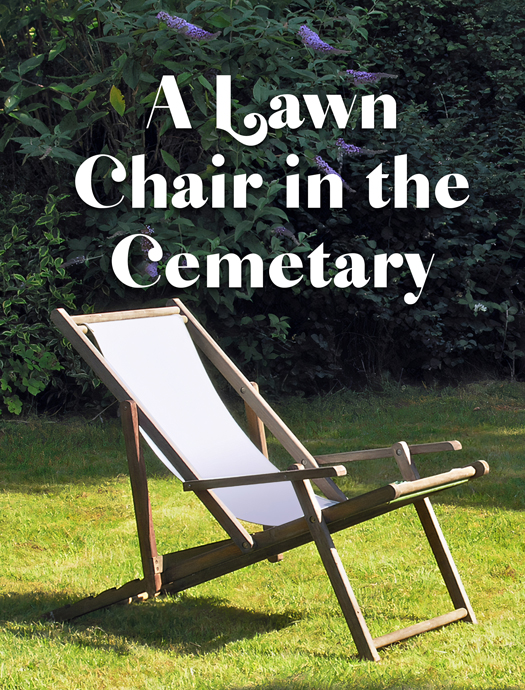An ode honoring those who are gone but not forgotten.
By Jo Mooy
I used to hold a “spiritual sophistication” about death. When a person, a pet, a tree or plant died, that sophistication kicked in whispering, they’re gone. It’s over. That’s just a body. The real essence is gone on to another realm or dimension. That attitude held firm for years. I didn’t want a grave marker because I wasn’t there. I wanted my ashes spread at sea or off a mountain top. The location depended on my mood of the day. Though I’m leaning to the mountains more and more.
I’ve always explored cemeteries, especially the old ones—to read the tombstones, think about the ones interred in family plots and intuit their lives, and to be saddened by young lives of toddlers cut short. While searching an old graveyard in college, I was surprised to find a tombstone for Prince Murat, the nephew of Napoleon in a Tallahassee, FL, cemetery. In another old graveyard, it sunk in that other countries, and cultures, and individuals, honored their dead in a very personal way. It was a huge thought-provoking learning experience.
These people didn’t have the same views as me about whether or not a body was in the grave or somewhere else. They visited the cemeteries and graveyards with ease, taking fresh flowers or wreaths and cleaning up the old plants. They knelt at the stone markers with tears in their eyes even though the dates were many years ago. Some brought teddy bears for the toddlers in the family plots. Visitors to Doc Holiday’s grave in Colorado left decks of cards or bottles of whiskey.
One day at another cemetery an elderly man pulled up in his car to a gravesite. He wandered through the rows carrying a lawn chair that he placed next to his wife’s grave marker. Then he sat down and began to have a lengthy conversation with her. That scene triggered something and has stayed with me ever since. It drained away the spiritual sophistication (or was it arrogance) that I’d created around death and how I interpreted it.
Once a year I go to St. Augustine, FL, the oldest city in the United States. It’s my favorite place in Florida, which I’ve visited since high school. I wander around the old historic area, the Fort, the Mission, and experience the history of centuries gone by. My parents bought a home in the historic section, planning to retire there until a five-alarm fire at the Jacksonville Shipyards took my father’s life one year from his retirement from the Fire Department. St. Augustine is also home to the smallest National Cemetery, one hundred yards from my parent’s intended home. They often walked to the cemetery telling the family of their desire to be buried there. Both of them were!
On my annual visit to St. Augustine, I always walk past their house on Marine St. It’s now occupied by another family. My mother’s 1800s fire alarm box that she turned into a mailbox is still holding vigil on the side of the driveway, waiting for an alarm that will never come. Her stone pineapple, symbol of welcome (because that’s how they do it in Antigua, she once told me) is still on the new owners steps. If I soften my gaze I can see or imagine them sitting on the front porch.
Then I stroll over to the National Cemetery to say, “Hi, it’s me!” and leave a token flower or rock on top of their grave marker. I know that only their ashes are interred there. And, both of them are decades gone to another realm. Even so, the visit to their home and then to their grave site is weirdly comforting. Maybe it’s the familiarity of their home with the things my mother called sacred. Or the lingering memories of them living in St. Augustine and walking those narrow streets in the late afternoon then sitting by the benches at the bay. Maybe it’s more like remembering the old man sitting in the lawn chair and chatting with his wife in the cemetery.
Whatever the impetus to visit the cemetery, I go. My mother was pleased to know the National Cemetery was once a Spanish Franciscan monastery in 1763. She considered it a holy site. There are three large Pyramids about 10 yards from my parent’s grave that mark the remains of 1,400 soldiers killed in the Seminole Indian Wars. Of course, there’s no mention of what happened to the bodies of the 400 Seminoles who died. Nor is there a monument to them. All they got was a generalized statement on the bronze plaque.
Without a lawn chair to set up and have a discussion, I stand in prayer in honor of them and let them know they’re remembered. In October, when people all over the world remember the Day of the Dead, I too will light a candle for them, and for all my friends and family who died. I’ll remember that all those lives were well lived and they’re not forgotten—wherever they are now.
Jo Mooy has studied with many spiritual traditions over the past 40 years. The wide diversity of this training allows her to develop spiritual seminars and retreats that explore inspirational concepts, give purpose and guidance to students, and present esoteric teachings in an understandable manner. Along with Patricia Cockerill, she has guided the Women’s Meditation Circle since January 2006 where it has been honored for five years in a row as the “Favorite Meditation” group in Sarasota, FL, by Natural Awakenings Magazine. Teaching and using Sound as a retreat healing practice, Jo was certified as a Sound Healer through Jonathan Goldman’s Sound Healing Association. She writes and publishes a monthly internationally distributed e-newsletter called Spiritual Connections and is a staff writer for Spirit of Maat magazine in Sedona. For more information go to http://www.starsoundings.com or email jomooy@gmail.com.

